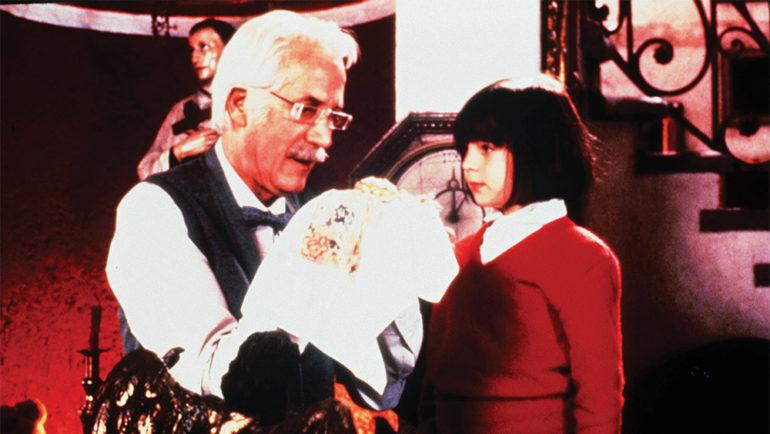‘Cronos’ Producer Looks Back on Guillermo del Toro’s Early Days
By Arthur Gorson
LOS ANGELES (Variety.com) – I somehow found myself in a swampy jungle deep in the Mexican state of Nayarit. A group of shipwrecked Spanish explorers were cutting their way through the thick underbrush. Swoosh! a hail of arrows and then splashes of blood. Suddenly a jolly young man, wearing an apron covered in blood, emerged from behind a mangrove tree. He was in charge of special effects make-up, and was laughing wickedly.
The year was 1990 and I had been invited by a friend, the Mexican producer Julio Solórzano, to join him and Bertha Navarro on location for the production of the historical epic “Cabeza de Vaca.” The film had Mexican and Spanish funding. It was set to be released to coincide with the 500th anniversary of what the Spanish insisted on calling the Encounter, and the Mexicans called the Conquest. It was to be my first encounter with .
I was lucky enough to be invited to stay on with the production as consulting producer. (After spending several years developing studio features in Hollywood, the passion of this Mexican production team reminded me why I wanted to make films in the first place.) “Cabeza de Vaca” finished on time and we all got to go to the Berlin Film Festival, where it was shown in competition. We didn’t win.
We were taken by del Toro’s infectious energy and spirit. He was 26 and had totally immersed himself in the magic of filmmaking since he was a kid. He had grown up in Guadalajara, “at home with monsters,” and had a script for a modern horror film called “Sangre Gris.” Feeling invincible, we decided to develop the project with Guillermo del Toro as writer-director.
Now began the real adventure, as I was privileged to enter the world of Guillermo del Toro. I love Guadalajara — it’s the cultural heart of Mexico. It was there, in his hometown, that Guillermo had established a full special-effects shop called Necropia. I’m told it was the first special effects make-up house in Mexico. He had studied with Academy Award-winner Dick Smith, the godfather of special effects, who befriended him. Smith also taught molding and sculpting. Necropia had facilities to make prosthetics and had the best secret blend of blood. From that base, Guillermo had worked as supervising effects artist on multiple film projects. He was ready to put all his skills and training to work on his
feature directorial debut.
I was invited to his home. He proudly gave me an autographed copy of his 546-page book “Alfred Hitchcock” (written when he was 23, and published in 1990 by the University of Guadalajara).
I was very honored to meet Guillermo’s parents, Guadalupe Gómez and Federico del Toro. They were amazing and very proud of their son. Guillermo’s mother candidly told me about her visit with aliens. His father’s story revealed him to be a unique self-made man. Federico del Toro started life without privilege. He sold religious items, then used bicycles, and then used motorcycles. As a dashing young man he won a motorcycle race from Guadalajara to Lake Chapala, making him a local hero. He opened a used-car dealership, which morphed into one of the most important car dealerships in the state of Jalisco. And then … he won a national lottery!
Guillermo was bursting with excitement and couldn’t wait to start work. Since I had previous experience supervising the development of mainstream film scripts, it was decided that Guillermo would join me in Los Angeles so we could work together. From the very start it was clear that he was a brilliant and original storyteller. Even though the film was eventually going to be in Spanish, we decided to do a totally new draft in English. (Once we had a version that we could sign-off on, it could then be translated back into a Spanish shooting script.) The title kept changing from “Sangre Gris” to “La Invencion de Cronos” to “The Cronos Device” and finally just “Cronos.”
We worked with a focused intensity. At times Guillermo would be visited by the muse, and new clarity would be revealed. At other times the inspiration was harder to come by. Once I heard a loud ka-boom as, deep in thought, he had walked into the glass door on my deck.
It was that English script that Guillermo sent to Ron Perlman, along with a long hand-written note praising Ron’s every little turn as an actor. It blew him away, and Ron agreed to work on what was to be his first venture into independent filmmaking. What he had yet to learn was that the film would be shot in Spanish — a language he didn’t speak! When the two met they bonded immediately, and it marked the start of a long collaboration between the actor and director. It also gave us our only recognizable American name to raise funding with.
The result was a fantastic film, and the effort was one we will always be proud of. We once again ended up at a major film festival, and this time we won! “Cronos” was the winner of the Grand Prix in the Intl. Critics’ Week section of the 1993 Cannes Film Festival. It also won nine Ariel Mexican Academy Awards. And … an important new filmmaker burst upon the world stage.
Arthur Gorson’s feature film credits as a producer include: “Cronos” by del Toro; “Better Watch Out” and “Road to Nowhere” by Monte Hellman; “Night Watch” by Timur Bekmambetov; and “No Place Like Home” by Perry Henzell.

